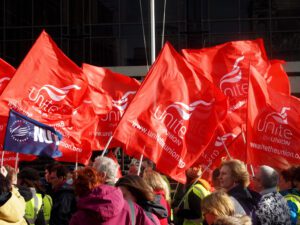
Real World Economics: The give and take of city tax plans
Edward Lotterman
It’s budget time in the Twin Cities.
Mayors of both St. Paul and Minneapolis have released their plans for the coming year. Both contain substantial increases in both spending and the amounts levied in property taxes. These increases were not unexpected in either city.
St. Paul Mayor Melvin Carter continues to emphasize housing affordability and wants to correct past mistakes in that area.
Minneapolis, under Mayor Jacob Frey, faces a barrage of upcoming spending increases. These include a 30% increase for public employees over three years, and a 21.7% increase for police. Next are costs of complying with two settlement agreements. The first with the Minnesota Department of Human Rights over past discriminatory practices. The second, still pending, will address U.S. Justice Department’s mandates from its investigation of policing that grew out of the 2020 police murder of George Floyd. Also, 2024 was the last with federal Covid-relief funds.
There isn’t much economic theory in all this, but there are a lot of important institutional details of government finance. Both cities have websites with much information. This often requires heavy plowing, but residents can learn a lot.
Start with one interesting difference: Proposed spending for Minneapolis, population 425,000, is $1.8 billion. That for St. Paul, population 304,000, is $885 million. That mean per capita outlays for Minneapolis of about $4,400 while that in St. Paul is roughly $2,800. This is not an apples-to-apples comparison since the cities differ in what is and isn’t included in different funds. It does not mean that one is wasteful nor the second prudent. Rather, it shows how two apparently similar cities may have quite different economies, populations, institutions and infrastructures. City-to-city or city-to-national average comparisons can be useful, but can also be misleading if taken out of context.
Secondly, contrary to the assumptions of most homeowners, property taxes fund less than half of a city’s budget. News stories for St. Paul noted a 7.9% increase in the tax levy right after the $885 million total spending level. But these are two different things. Yet total spending is only up 1.8% from $840 million in 2024. How can this be? Well, property taxes only provide $225 million, or 30%, of St. Paul’s total. That is across all real property classes, including commercial and industrial property, downtown office and residential towers, retail storefronts and so forth.
Housing includes rental as well as owner-occupied properties. So homeowners don’t bear the entire budgetary world on their shoulders. The added St. Paul tax on a median $290,000 home will be $132 for a year.
Where does the rest of the money come from if not the taxes most of us know? St. Paul gets $273 million in “sales, fees and services,” but only $52 million of that goes into the $394 million general fund. There are $29 million in “franchise fees” paid by utilities, electricity, gas and telecommunications, serving the city. Go to the budget website for more detail.
Also understand that a city gets only part of the total property tax bill sent to owners. The county and school district also have large shares. For a typical St. Paul property, about a third goes to the city, another third to St. Paul Public Schools and 28% to Ramsey County. The rest is to special taxing districts for wastewater, transit, mosquito control, watersheds, “lake improvement” and so on. A fraction of 1% goes to a regional rail transit authority.
If only a quarter of outlays come from real estate taxes, does that mean residents are not affected by other revenue sources? And who bears the burden of taxes on rental housing, shops and offices for corporations down to sole-proprietor dentists, lawyers and accountants?
This raises the issue of “tax incidence” — the question of who actually bears the burden of a tax versus who writes out the check to pay them.
Well, start with the franchise fees paid by utilities. Nearly all get passed to consumers — but in proportion to usage of these services rather values of the property where used.
Then take rental housing. Most of the property tax falls on tenants, although not all. The old saw that “Democrats love affordable housing but hate landlords,” has validity. When rental housing is taxed heavily, the burden of the tax as a proportion of household income can be higher for renters than for owners even though renters write no check for these taxes.
Also note that property taxes are tied to the value of a property and not equity in it. A young family just into a starter home probably will pay a higher proportion of income for taxes than an established household with two mid-career earners.
That reverses for many retirees. Elderly people may have bought a house 50 years ago at a sharply lower price than now, even adjusted for general inflation. The house may be long paid off. Thus Social Security and modest savings may cover their food, clothing, utilities and transportation. But if a $30,000 house in 1970 is a $500,000 house now, their tax bill will be enormous relative to income.
However, rental markets don’t stop at city limits. If taxes on apartment buildings in St. Paul are at a higher rate than in suburban Vadnais Heights, for example, the effect may be to lower the values of the property in the center city since rents cannot be relatively higher in that in the suburb.
The reverse can be true for subsidies to housing in a city, whether through direct aid to renters or exemptions from taxes through tax increment financing. Instead of subsidies fostering a net increase in housing built, the effect simply may boost prices for developable land.
St. Paul already tried shotgun-approach rent controls that capped annual rent increases at 3%. Leaders are now backpedaling furiously from that. But it is not clear that the city council or the mayor fully understand the dilemmas they face. The housing stock in a built-up central city like St. Paul is not set in stone, but nearly so. If you want to help poor renters by capping rent increases, then new construction or rehabilitation slows. If you give financial aid to poor renters, but fund that with increased property taxes, rents either increase to bear the extra taxes or profitability to landlords fall. That too inhibits new development. The net improvement in overall rental availability and affordability is less than hoped for.
Another issue not fully appreciated either by residents, homeowners or voters, is the basic structure of city outlays. About 30% of St. Paul’s general fund spending goes for the police alone. The forces for both cities are short of officers. In St. Paul, about 20% funds the fire department which includes EMT services. Then you have parks and recreation at about 12% and public works at 11%. So everything else must share 25% of the budget.
With concern about crime, people don’t want reduced policing. They don’t want poorer parks or reduced recreation nor poorer streets. So an “anyone could cut 10% across the board” view is out of touch with reality.
Inadequate public works cause outrage. Yet there is not great waste. One cannot reduce spending without cutting services like snow plowing or spring pothole filling. Also note that these two items can vary greatly with weather. Obviously, plowing varies with snowfalls, but the same annual total in severe, city-paralyzing mega-storms that force huge overtime bills can cost more than the same amount in a series of normal ones. Even differences in temperature varying the number of freeze-thaw cycles can have large effects on street repairs.
Much more could be said. Much information can be obtained by delving into budget documents themselves, from an eight-page summary to the 376-page budget itself. Households and businesses still may be outraged when they get property tax statements, but better understanding of the budget helps public discussion of issues.
Related Articles
Real World Economics: The Fed can only do so much
Real World Economics: Central banks’ practices are on a perilous path
Real World Economics: Prosperity has a price, and a cost
Real World Economics: Depend on the security of the bond market
Real World Economics: Data is vital; two new reports tell us why
St. Paul economist and writer Edward Lotterman can be reached at stpaul@edlotterman.com.

